Staff shortages are a major problem for construction enterprises, and contractors often struggle to retain enough staff members to meet project milestones.
Construction incentive programs are a good way to motivate construction workers and maintain a more steady and efficient worker base.
Fair remuneration and safety equipment are just the start of what employers should provide their construction team members for high employee satisfaction.
Incentives can range from profit sharing to increased authority and solid health insurance for even part-time workers.
When employees feel respected and valued, they are more likely to stay with a project. In addition, attendance, performance, and morale also tend to increase.
Here are some suggestions for construction incentive programs to implement to motivate your construction workers.
In this article...
What Are Employee Incentive Programs?
There are two types of employee incentive programs: monetary and non-monetary.
As their name suggests, monetary employee incentive programs focus on cash rewards for good work.
These can come in the form of increased wages, retention bonuses, performance-related bonuses, or commissions.
Other options include stock options or revenue sharing, tuition credits, and health insurance with fringe benefits, such as paid gym memberships.
On the other hand, non-monetary employee incentive programs include increased authority, flexible scheduling, or cost-covered vacations.
Before launching an employee incentive program, it’s important to plan carefully and obtain permission, funding, and boundaries of implementation, as seen below:

These programs can come in several other categories and are easily adjustable for any location or workforce.
Earned employee incentive programs, for example, depend on reaching certain specific goals, such as meeting project milestones or reduction of safety incidents.
Arbitrary incentive programs consist of rewards that differ for each employee, or that are not measurable by hard data.
For example, while distributing profit sharing dividends, decision-makers can opt to award more to employees with good attitudes who are encouraging and helpful to teammates.
Are Incentive Programs Effective?
Employee incentive programs can work as long as contractors thoughtfully implement them and meet the needs of their employees.
For example, employees who work in Orlando might not feel too impressed with a trip to Disney World, but the same prize could strongly encourage a workforce in North Dakota.
Asking employees what is important to them and using this input to design an incentive program points out not only that you want to perform your job as a manager well, but also that you care enough about the workforce to listen to its members.
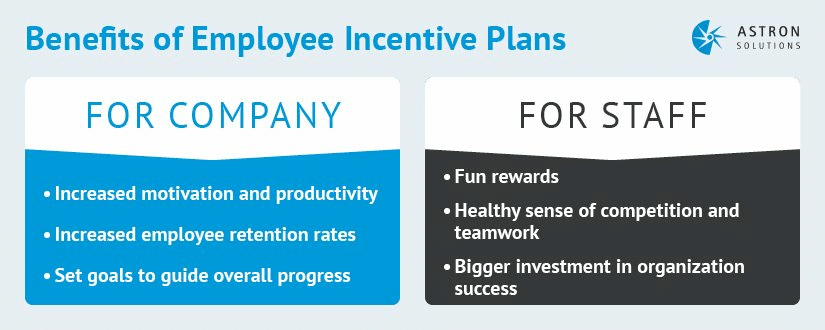
As the above chart demonstrates, employee incentives can yield many benefits; for example, a recent Harvard study affirms that bonuses do tend to motivate employees involved in sales or referrals.
Moreover, they are also effective in other industries.
Some argue that incentive programs might encourage a sense of entitlement and tempt immoral behavior, in addition to giving rise to bitterness and animosity amongst employees who receive unevenly distributed bonuses.
However, in smaller companies in which stakeholders carefully manage and distribute bonuses for the short term, incentive programs can operate effectively.
Tips for Successful Incentive Programs
Effective incentive programs are based on trust between contractors and workforce members.
They are also better administered when employees feel respected and that they are not, for example, receiving basic work needs such as personal protective equipment (PPE) or safety training as “bonuses.”
Other actions to ensure successful incentive programs include establishing clear benchmarks, linking the incentive to results, and using good judgment with incentive timing.
Establish Clear Benchmarks
Clear benchmarks are vital for employee incentive programs because they establish boundaries and provide a tangible mark to meet.
Transparency in this matter is also important because it publicly indicates what the stakes are for the incentive.
To establish well-defined benchmarks, speak with employees and managers to determine a goal that is a challenge to the workforce, but is attainable with reasonable effort.
It’s also important to announce the terms of the incentive. For example, an entire week without safety code violations.
Placing this goal in writing in a prominent area such as an employee lounge can help to provide motivation.
One way to find a good benchmark is to consider performance metrics:
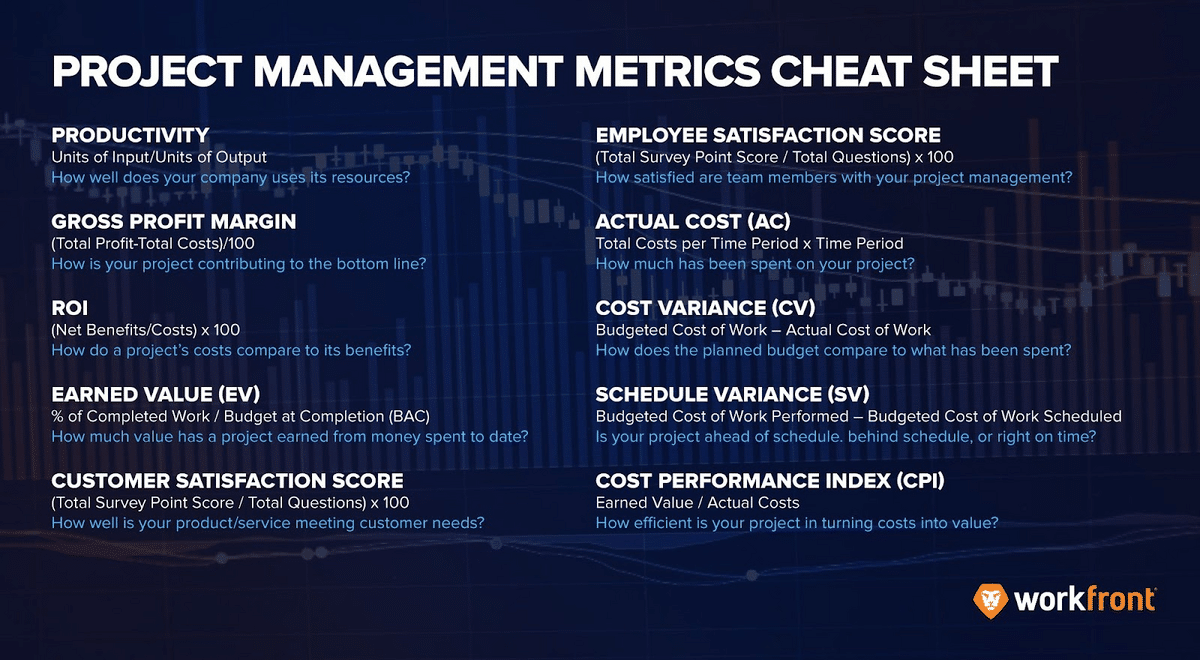
Here are some metrics that can provide goals for the workforce to meet. A construction crew, for example, can aim for low schedule variance or high client satisfaction scores.
Link the Incentive to Results
As long as a task is measurable and within the employees’ power, it is suitable for benchmarking.
Using a daily updated chart illustrating how close each worker is to attaining his or her goal—or the teams’, if they are working together—can help to provide measurable progress and encouragement.
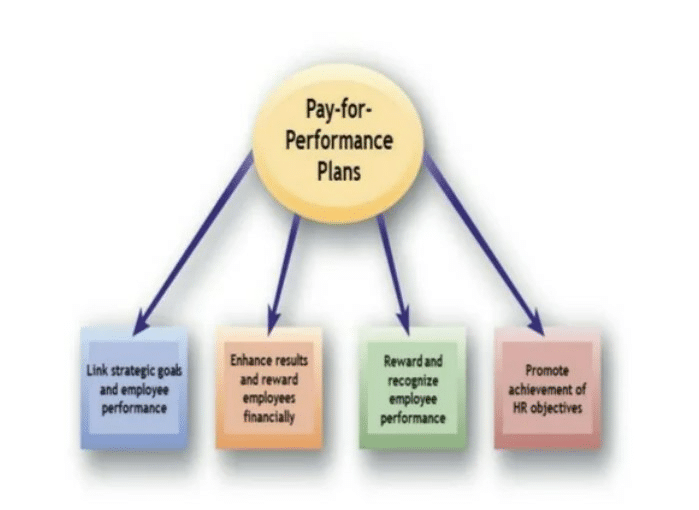
This graphic indicates that linking strategic goals and employee performance can have multiple benefits, among them, advancing HR objectives and enhancing employee results.
However, clear communication of what this link is has an enormous impact on successful implementation.
When employees don’t know how decision makers distribute awards or can’t tell how close they might come to reaching them, motivation is often more difficult to find.
Time It Right
Best practices for incentive programs include some thought about timing rewards, as this visual aid shows:
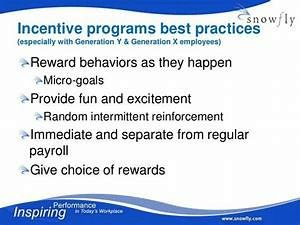
Incentive programs often work more effectively if employees realize the benefits immediately and apart from regular payroll checks.
Incentives that are awarded in real time, rather than some far-off date, can provide better results.
For example, promising employees a Christmas party in June might seem like a far-off goal for hard work in the moment.
However, a team party after a week of meeting scheduling goals is more immediate and attainable.
Random and intermittent reinforcement can work well, too. This is the slot machine effect.
Just as gamblers feel a rush of adrenaline when rewarded at random intervals for playing a game, employees can feel more excitement at work if incentives occasionally appear by chance.
Incentive Ideas for Motivating Construction Workers
Motivating construction workers beyond simple pay increases can seem like a difficult challenge. However, different workers respond to different incentives.
Using multiple approaches is often best. Here are some ideas for motivating your construction team.
Verbal Praise
Specific and sincere recognition is important for some employees.
It emphasizes that the company is interested in them as distinct and irreplaceable human beings, and proves that project managers notice extra effort or good attitudes.

As this visual aid indicates, employees are more likely to leave a job if they feel they go unappreciated or unrecognized.
Verbal praise can come in the form of social media posts with a photo, impromptu speeches at employee gatherings, or a few words to the employee one-on-one.
However, make sure you know your team well before using this incentive.
Some people are uncomfortable with attention, even positive remarks, and others might wish to avoid appearing on social media or webpages.
Profit-Sharing
Profit-sharing, once the domain of high-ranking decision makers or project managers, is increasingly becoming an incentive for all employees.
Also known as gain-sharing, this incentive rewards employees on the performance of the entire company rather than on the basis of individual achievement.
This chart presents an example of construction industry profit-sharing that is paid quarterly:

The profit-sharing approach helps your team to feel invested in the company’s performance and to aim for good cost control on the site and elsewhere.
Companies that use profit-sharing typically pay them out at the end of the year or each quarter.
Bonus Programs
Bonus programs for construction employees reward sustained performance and team effort.
As long as they are clear, they can provide opportunities for temporary or permanent pay raises.
This graphic illustrates just how much impact a well-structured bonus program can have on success rates:
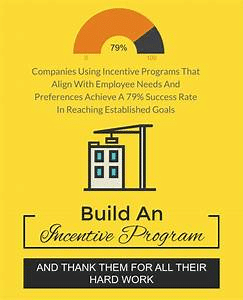
Some effective monetary bonus programs might provide compensation between usual pay periods.
In all cases, bonus programs that work well are good supplements to other programs and target the employees’ specialty or field of responsibility.
Advancement Opportunities
It does not motivate some employees to only use one-time incentives such as trips, bonuses, or even pay raises.
These workers are seeking more responsibility, leadership opportunities, or invitations to rise within the company.
Nurturing and mentoring such employees provides a good example for the rest of the crew and provides well for the future of the company.
Offering advancement opportunities to ambitious crew members is also an excellent way to foster strong decision-makers.
These men and women will understand the construction industry from a workers’ perspective and bring valuable input to an office setting.

This flow chart details a typical construction career path.
If employees can see the step-by-step process before them beyond hourly pay or apprenticeship, they are more easily motivated to move up the ladder.
Straightforward goals seem more attainable.
Advancement opportunities can come in multiple forms, among them tuition reimbursement for attending trade school, college, or skill endorsement workshops.
Incentivizing these behaviors increases the knowledge base of your construction crew and publicly establishes that your company is eager to invest in those with promise or are willing to put forth extra effort.
Benefits
Some workers seek incentives that don’t appear in their paychecks, but are still worth significant amounts of money.
These can include child care reimbursement, paid time off, comprehensive health insurance, company cars and phones, gas payment programs, dental coverage, and more.
Here is a chart displaying many popular benefit packages amongst construction workers:

In a labor market that favors the employee, sometimes offering benefits tips the balance when a candidate is considering a job offer.
Do research to find out which benefits competitors in your area are offering their employees, and match them if you hope to increase retention and reliability.
Conclusion
Successful motivation of your construction employees is a multi-pronged endeavor.
Employee incentive programs are initiatives above base pay and benefits that encourage workers to meet certain goals or stay with the company.
When properly implemented and consistently applied, incentive programs are often effective.
By establishing clear benchmarks, linking incentives to results, and thinking carefully about timing, project managers can effectively implement such programs.
Additionally, some ideas for motivating construction workers include verbal praise, profit-sharing, bonus programs, advancement opportunities, and superior benefits.





